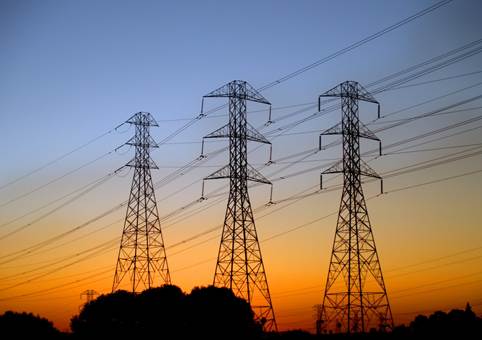 When India is looking ahead providing electricity in every village and progressively moving towards Smart Cities Project, Digital India and Make in India, the very basis of infrastructure, the power transmission, needs to be protected for many years…. And that is where Zinc will again prove to be a future metal.
When India is looking ahead providing electricity in every village and progressively moving towards Smart Cities Project, Digital India and Make in India, the very basis of infrastructure, the power transmission, needs to be protected for many years…. And that is where Zinc will again prove to be a future metal.
When was the last time we saw a tall standing electrical pole and thanked him for providing electricity to our houses. Well, we all have grown seeing these poles and they do have memories of our childhood. Little we knew that these poles are protected through hot-dip zinc galvanization and this is the reason they are standing tall from years after years, and have seen perhaps more age and weather conditions than us.
Since the advent of high voltage lines hot-dip galvanized steel has been used in the electric utility market. Whether in a generation facility, substation, lattice tower, or renewable energy components, galvanized steel has been a backbone of any country.
According to the American Iron and Steel Institute, close to 1 million steel distribution poles have been installed in the United States since 1998 and are being used by more than 600 U.S. electric utilities. India might be having more poles but how many galvanised is still to be assessed.
Since zinc is anodic to steel, the hot-dip galvanizing also acts as a sacrificial anode if the galvanized coating is physically damaged to some degree. If individual areas of underlying steel become exposed, the surrounding zinc will provide sacrificial cathodic protection (CP) to the unprotected sites by corroding preferentially. The zinc is consumed as it sacrifices itself to protect the bare steel.
Generally speaking, galvanized steel can last for many years in non-aggressive environments, and typically does an excellent job of protecting steel when the structure is located in moderately corrosive environments.
It is also true that the galvanizing on structures will corrode over time. The rate that the

thickness of the zinc coating will diminish and the length of the remaining service life of the galvanizing—and the structure itself—are contingent on the active corrosivity of the environment. Several factors are associated with the corrosion rate of galvanized structures, such as the in-service atmospheric conditions to which the aboveground portion of the structure is exposed, and the soil environment where the structure’s foundation is buried.
When India is looking ahead providing electricity in every village and progressively moving towards Smart Cities Project, Digital India and Make in India, the very basis of infrastructure, the power transmission, needs to be protected for many years…. And that is where Zinc will again prove to be a future metal.
Hindustan Zinc is India’s only and world’s leading Zinc-Lead-Silver Producer..
Article by- Pavan Kaushik, Head – Corporate Communication, Hindustan Zinc


